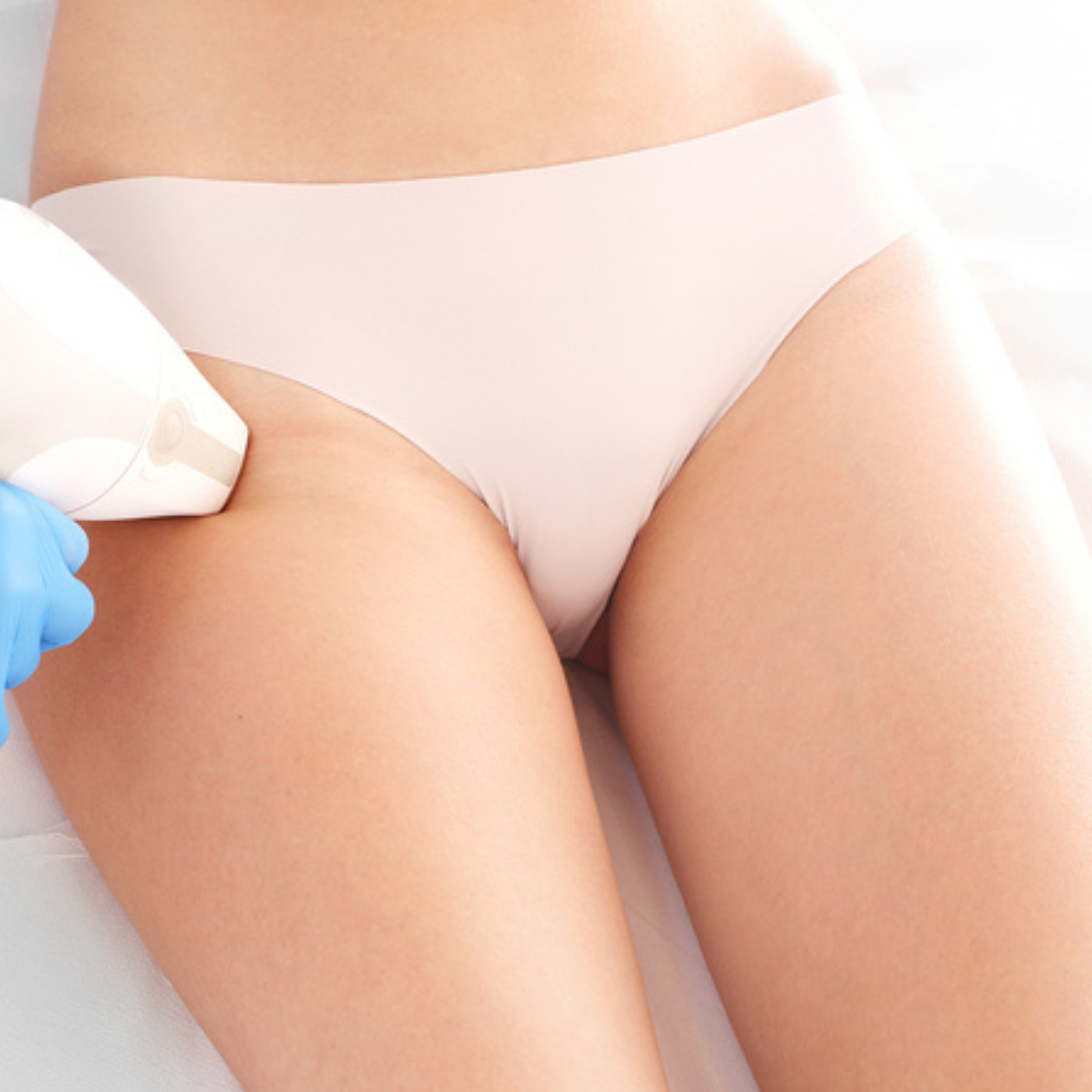I was excited to become hairless and not have to subject my body to waxes and razors anymore. I went the IPL laser hair removal route and it went as smoothly as I could have expected. You don't have to especially brainy to figure out how to use an IPL hair removal device :).
It was after all the hairs were gone that I saw two burn marks in my underarm area. They looked a bit like bruises, which got me thinking about whether I might have acquired them elsewhere. Not a chance. These were the laser burn marks I'd heard about.
So I did what most people would do - Google 'laser hair removal burns'. And every credible source informed me that the burns do happen and would go away in a few days. But I'd have to take care of a few things to make them disappear as quickly as possible. I followed the advice and voila, they healed and went away on their own. In this post, I'd like to share what my experience taught me. Hopefully, it will relieve your anxiety and help you tackle any burns you may get during IPL laser hair removal
What does a laser burn look like?
The typical signs of a laser hair removal burn are: redness and swelling of skin, usually in the shape of the tip of the laser applicator device used. You may be alarmed but it's just your skin responding naturally to an external stimulus.
When you sustain a burn, you can do few things to calm and treat your skin. Before we get into how to deal with laser hair removal burn, here's a look at why it may happen and how you can prevent it.
Why does a laser hair removal burn occur?
- A burn can result from an older laser device that may not have all the safety features of the latest laser applicator and IPL hair removal devices.
- Laser hair removal services usually apply a gel to your skin before lasering off hair. The gel cools your skin and allows the laser to glide smoothly across it. The gel must dry before the area is treated. If it isn't allowed to, there's a slight chance of sustaining a burn, and more so if the laser makes contact with your skin for too long.
- Sometimes, it boils down to poor hygiene. The debris that accumulates on the applicator device can cause a burn reaction.
Have delicate skin? A laser that isn't compatible with fragile or thin skin may make your skin red and tender. This doesn't mean that you're at a disadvantage when it comes to achieving smooth, hairless skin. Kior laser hair removal machine is designed keeping in mind all skin types. If your skin needs careful handling during cosmetic treatments, then Kior deserves a place in your beauty cabinet.
Skin color also plays a role. Did you know that dark-skinned people absorb 30% more sunlight than peers with very light skin? This also plays out in the laser hair removal scenario where an individual with a darker skin tone absorbs more heat across their skin.
Areas with thinner skin can also be more sensitive to laser exposure. To alleviate worries when using an IPL laser removal device for the first time, consider starting with a lower energy setting for your neck, face and bikini area.
How to make laser hair removal burn go away
You can easily treat the minor laser hair removal burn you sustain at home or at the salon.
- The area will burn a bit. For instant relief, run cool or lukewarm water until the pains subsides. Never use ice or cold water on the burn or on any burn for that matter. Extreme cold can constrict the blood vessels near your skin, reducing blood flow to the affected areas and interfering with the healing process.
- Avoid applying sprays or greasy ointment to the area as it can trap in heat, the opposite of what you want. Allowing heat to escape from the burn gives it a chance of healing quickly.
- Cover the affected area loosely with a gauze.
- If the pain lingers, take a paracetamol or ibuprofen.
- Avoid wearing tight-fitting clothes, bands or anything with a rough texture that could irritate or even aggravate the burn.
- As burns are sensitive to the sun, avoid exposing the affected area to direct sunlight until after the redness has disappeared.
- Treat the burn with a topical antimicrobial. If you aren't sure, you may want to drop your doctor a line.
Blisters and acne may appear in the area that has experienced the burn. Here are the dos and don'ts of dealing with them.
What to do about blisters and pimples?
As an IPL device uses heat energy to kill hair follicles, it can cause blisters. The best thing is to leave the blisters alone so that they heal on their own in about a week. If you're worried about infection, consider a topical antimicrobial ointment. Otherwise, blisters from laser hair removal don't require any special care.
Never pop blisters. Remember that they're there to cushion the burned area and help it heal faster.
Then there's acne, which can appear when your skin's pores get clogged. As the heat from the laser opens up your pores, your skin can be vulnerable to minor infections. Your body then triggers small bumps filled with pus to get the bacteria and germs out.
Like blisters, acne doesn't need any special care. What you can do to is to keep the affected area cool by avoiding tight-fitting clothes that can graze against the pimples. If the pimples don't go away, use an antibiotic cream or consult your doctor. Again, avoid popping the pimples or they may leave scars behind.
Will the burn marks remain?
A slight discoloration is normal after laser hair removal, and resolves on its own in a week or so. In some cases, marks may form in the affected areas. The medical term for burn marks is post-inflammatory hyperpigmentation. They are not scars, rather, dark marks or spots following the procedure. A quality IPL hair removal device will not cause burn marks.
Chances are higher at salons and aesthetic centers that user laser improperly, and this can be a problem if the skin sustains burns of greater depth. In such a case, it may take several months for natural skin to return to the affected area. Generally, the discoloration from post-inflammatory pigmentation is temporary. Your doctor may prescribe topical treatments to help speed up the process.
No burns but skin burning or itching?
The minutes after laser hair removal can feel uncomfortable because you've just banished an important accessory to the skin! Show your skin some tender loving care and the discomfort will resolve in a few minutes to a few hours. Wet a washcloth in cool water and place it on the area experiencing itching or burning. Avoid exfoliating or cleansing the area after hair removal to avoid irritating your skin further.
Preventing burns in the first place
As we've already said, burns are rare in an age of modern hair removal machines with tons of safety settings. Inappropriate use of the laser device is another issue. You may go to a professional but be disappointed with the results.
At-home IPL hair removal may cause burns if the device itself is a cheap machine you bought off the internet. No two IPL machines are alike. Quality and features matter a great deal in keeping side-effects of laser hair removal away. For instance, if you have sensitive skin, KIOR is a great match as it works on the most delicate skin. A stronger laser device that does the job but also acts harshly on your skin can potentially increase the likelihood of side-effects.
Skin care best practices can also go a long way in alleviating any discomfort of laser hair removal. Once you get into the groove of using an at-home IPL device, you will know how your skin reacts and can take appropriate steps to minimize or eliminate the possibility of burns completely.



